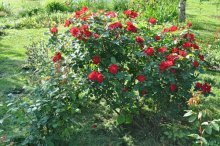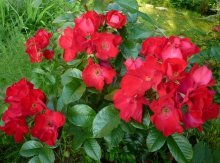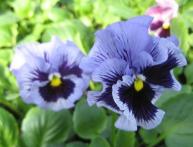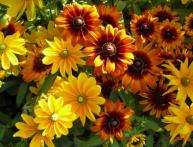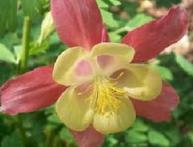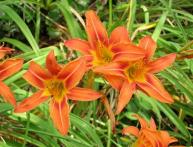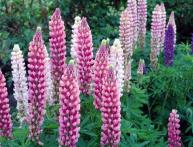Unpretentious rose Robusta

Currently, there are more than 20,000 varieties of roses grown in the planet's diverse climates. Entire areas of industrial cultivation and production of new varieties of this beautiful flower have been created. For the average gardener, a huge number of seedlings are offered for every taste. But if experience is not yet enough to decorate your garden with multi-colored rose bushes, then it is best to start with a very unpretentious variety of Robusta rose.
Content:
Rose varieties
The classification system for rose varieties is very complex, especially if we take as a basis not only the phenological characteristics of a particular plant species, but also the history of their origin. Thus, the famous Robusta rose has recently been assigned to the class of scrubs, unpretentious shrubs for northern gardens.
Sometimes they are called semi-climbing roses. This variety was obtained from the ancient rugosa or wrinkled rose in the nursery of Reimer Cordos in 1979. In Germany it was classified as a hybrid of the rose Rugosa. Bright red flowers adorn the huge bush throughout the season, covered with sharp thorns and dark shiny foliage. This is one of the most colorful rugosas.
First, an elongated bud is formed, and then brushes with small flowers in an amount of up to 10 pieces. The first wave of flowers appears in May, and then several more times during the season. Repeated flowering of a rose is one of the great advantages of the plant.
On the basis of this variety, in 1986 the same breeder developed the Pink Robusta variety with delicate pink flowers with a white spot in the center. The height of the bush and the size of the thorns are smaller, but the flowers, on the contrary, reach 10 cm in diameter. They are very resistant to bad weather and powdery mildew. The Canadian variety Cordeo Robusta is interesting. All varieties of Robusta roses are frost-resistant and are most often used to create beautiful hedge.
Planting and caring for Robusta roses

Rose Robusta can grow even in the poorest soils. But in order for the bush to develop faster and have a large number of bright inflorescences, it is recommended to prepare a place for planting in advance:
- The optimal feeding area for a rose is considered to be a planting hole measuring 0.7 by 0.7 m.
- It is advisable to apply mineral fertilizer, for example, Kemira Universal, in the amount of 100 g per planting.
Soil surface, located next to the seedling, can be covered with non-woven material to protect it from fast-growing weeds, which weaken the rate of establishment of the rose. This also has a good effect on preserving moisture in the soil. The plant is shade-tolerant and has no special requirements for soil composition.
An important agrotechnical measure in the process of growing a rose is its correct pruning, which is carried out in spring and autumn. In early spring, diseased shoots directed to the middle of the bush and shoots damaged during the winter are removed. Most often, 7 or 8 strong shoots are left on an adult bush. If the bush is young, then the number of branches for flowering should be less.
Each shoot is shortened by two-thirds of its length. Autumn pruning is very important for the growth of the bush next year.It is necessary to carefully examine the entire plant to avoid not noticing fungal diseases.
Unripe, weakened and shoots with buds must be removed, despite the fact that Robusta roses are winter-hardy and frost-resistant plants. You cannot cut the shoots short. This weakens the overall flowering of the bush. It's better to bend them to the ground. There is no need to heavily cover. On the contrary, in a relatively warm winter this can lead to damping off and death of the rose. The main thing is to observe a certain moderation in pruning for any type of rose without overdoing it, which would disrupt the harmony of the bush and the thoughtful composition.
Since the rugosa rose occupies the main place in the pedigree of the Robusta rose, it is necessary to take into account the important point of the plant’s special sensitivity to feeding liquid chemical fertilizers. If there is an excess of them, the leaves become yellow, and the bush quickly loses its decorative effect. Excess nitrogen also works when feeding with organic fertilizers.
The only effective method to prevent this effect is to first spill the soil under the rose bush. Liquid fertilizer is applied only to moist soil. Roses are watered generously several times a season.
Propagation of the Robusta rose
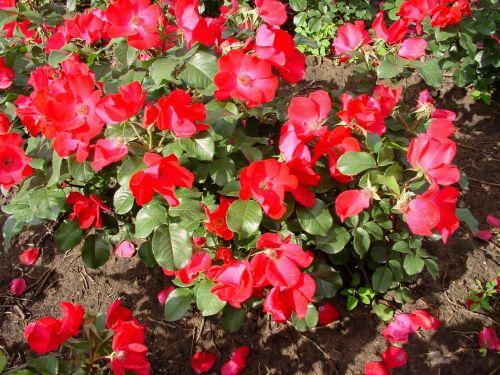
The easiest way to grow the required number of strong rose seedlings is by vegetative method. To do this, you can divide the bush, root the always available offspring or cuttings. In early spring, before the buds open, you can sprinkle several shoots with soil. They take root easily, and by autumn they have their own root system, which can ensure active growth of the bush next year.
Separation from the mother plant and transfer to a permanent location should be done next spring.
In order for the abundantly flowering Robusta rose bush to delight its owner with bright red flowers for many years, it is necessary to fulfill a number of requirements for its care. And this is the right site for planting, the presence of a healthy seedling, watering, fertilizing, pruning, pest control. Roses also love it when people just talk to them.
Video about the flowering of the Robusta rose:
Interesting information about the vegetable garden

